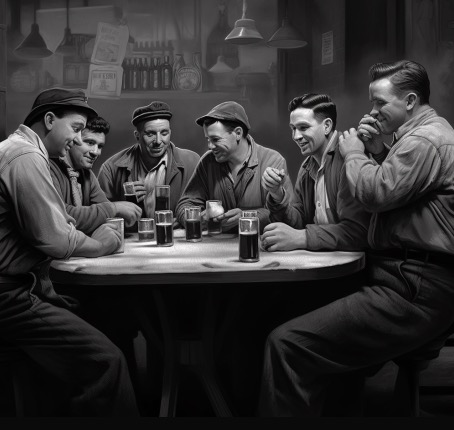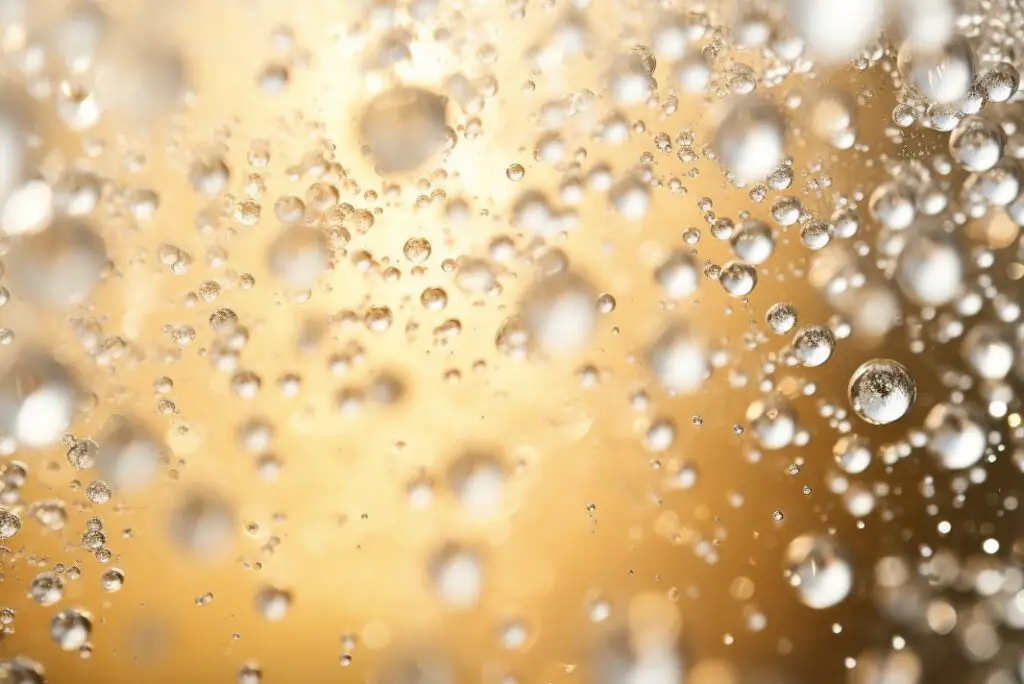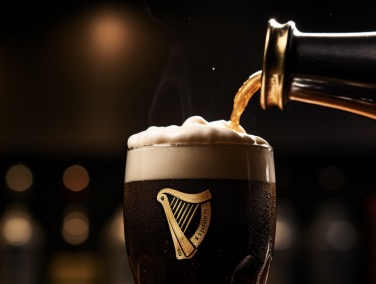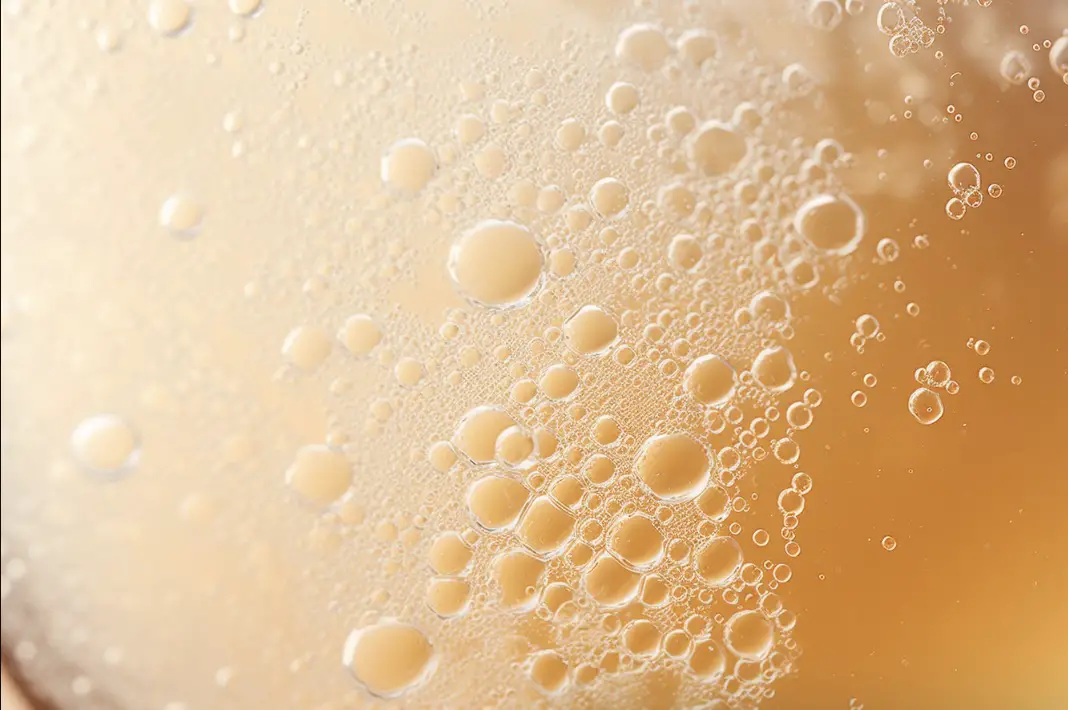Is beer traditionally a carbonated drink? Well yes and no! Beer as we know it today is carbonated but drinks made from fermented grains have not always been.
In this blog post, we’ll explore the history of beer and carbonation, the different types of non-carbonated beers, and the brewing process for both carbonated and non-carbonated beers.
As an experienced brewer, I’ll share my personal experiences with carbonation in beer and give you a deeper understanding of this fascinating aspect of brewing.
The history of beer and carbonation
Beer has been around for thousands of years, and it’s believed that the ancient Sumerians were the first to brew this beloved beverage.
Carbonation in beer is a natural byproduct of the fermentation process, as yeast consumes sugar and produces alcohol and carbon dioxide (CO2). This means that beer has likely been carbonated for as long as it has existed.
However, carbonation levels in beer have varied throughout history.
Before the advent of modern brewing techniques and equipment, beer was often less carbonated than it is today. This is because brewers didn’t have the means to control the carbonation process as precisely as they can now.
The history of beer making dates back thousands of years. The earliest chemically confirmed evidence of barley beer production comes from modern-day Iran in the 5th millennium BC.
The written records of ancient Egypt and Mesopotamia mention the use of beer, and the drink has since spread worldwide.
The oldest surviving beer recipe, dating back 3,900 years, was found in a Sumerian poem honoring the goddess Ninkasi, the patron of brewing.

Beer may have been known in Neolithic Europe around 5,000 years ago and was predominantly brewed on a domestic scale. In ancient times, beer production continued to be made and sold domestically, but by the 7th century AD, European monasteries also started producing and selling beer.
Industrialisation of beer brewing
During the Industrial Revolution, beer production transitioned from artisanal to industrial manufacture, leading to a decline in domestic production by the end of the 19th century. The development of hydrometers and thermometers during this time allowed brewers to have more control over the brewing process and gain greater knowledge of the product.
Today, the brewing industry is a global business, with multinational companies and numerous smaller producers ranging from brewpubs to regional breweries. The annual global beer sales exceed 133 billion liters, generating billions of dollars in revenue.

Beer production in ancient times was not carbonated as it is today. While carbonation can occur naturally during fermentation, ancient beers likely had small amounts of dissolved carbon dioxide rather than being fully carbonated.
The process of fermentation would cause yeasts to settle on the mixture and rapidly consume the oxygen, leading to anaerobic respiration and the release of ethanol (alcohol) and carbon dioxide as by-products.
However, the low oxygen levels in the fermentation process limited the carbonation levels compared to modern carbonated beers.
How was carbonated beer invented?
The discovery of carbonation in beer is an interesting historical development that occurred over centuries, involving various factors such as fermentation, container technology, and scientific understanding.
Beer, in its early forms, was not naturally carbonated. It was primarily a result of the fermentation process where yeast consumes sugars, producing alcohol and releasing carbon dioxide (CO2) as a byproduct.
However, in the absence of a sealed container, the CO2 would escape into the atmosphere, leaving the beer somewhat flat.
The knowledge of carbonation itself can be traced back to ancient civilizations. The ancient Greeks and Romans were aware of naturally carbonated mineral springs, where bubbling gases were observed.
These springs piqued the curiosity of philosophers and naturalists, but the connection to beer carbonation was not immediately made.
Fast forward to the Middle Ages, when beer was a staple beverage in many European societies. Brewers and beer drinkers noticed occasional carbonation in beer, but it was seen as an irregularity or flaw.
In fact, breweries often went to great lengths to eliminate excess carbonation by storing and tapping the beer when it had settled.

The pivotal moment came with the development of stronger glass bottles in the 17th and 18th centuries. Prior to this, bottles were typically made of weak and fragile materials such as pottery or leather, unable to withstand the pressure created by carbonation.
With the advent of stronger glass bottles, it became possible to seal the beer effectively, preserving the CO2 within the container.
Around the same time, scientists began to investigate the phenomenon of carbonation. In the late 17th century, English physicist and chemist Robert Boyle conducted experiments on carbonated water and made significant contributions to our understanding of gases. His work laid the foundation for further exploration of carbonation in beverages.
As beer was now being stored and transported in sealed glass bottles, the CO2 produced during fermentation had nowhere to escape.
This led to the gradual realization that the trapped carbon dioxide created pleasant effervescence, improving the taste and mouthfeel of the beer. Brewers began intentionally allowing carbonation to occur and even experimented with different techniques to enhance it.

The Industrial Revolution in the 18th century brought further advancements in brewing and bottling technology. Mass production of glass bottles became possible, making carbonated beer more accessible to the general population. This, coupled with the growing scientific understanding of carbonation, popularized the practice of carbonating beer intentionally.
In summary, the discovery of carbonation in beer was a gradual process spanning centuries. Beer was not naturally carbonated, but the development of stronger glass bottles allowed brewers to capture and retain carbon dioxide during fermentation.
This, along with scientific progress and improved container technology, led to the intentional carbonation of beer and the recognition of its enjoyable effervescence.
Types of non-carbonated beers
While carbonated beer is the norm, there are several types of non-carbonated beer that you may encounter. Some of these include:
Cask-conditioned beer
Also known as “real ale,” cask-conditioned beer is a traditional British brewing method that allows the beer to undergo secondary fermentation in a cask. The cask is sealed, and the beer is served directly from it, typically via a hand pump. This results in a beer that is less carbonated and has a smoother, creamier mouthfeel.
Still beer
Still beer is similar to cask-conditioned beer, but it undergoes no secondary fermentation in the cask. Instead, the beer is allowed to clarify and mature in the cask before being served. This results in a completely flat, non-carbonated beer.
Kvass
Kvass is a traditional Slavic and Baltic fermented beverage made from rye bread. It has a very low alcohol content, typically between 0.5% and 2.5% ABV, and is often non-carbonated.
The brewing process is pretty much the same
The brewing process for carbonated and non-carbonated beers is largely the same, with the primary difference being the method of carbonation. The basic steps of brewing are as follows:
1. Mashing: Grains are steeped in hot water to extract fermentable sugars.
2. Boiling: The liquid, called wort, is boiled to sterilize it and extract bitterness from hops.
3. Fermentation: Yeast is added to the cooled wort, converting sugars into alcohol and CO2.
4. Conditioning: The beer is allowed to mature and develop its flavors.
For carbonated beer, the CO2 produced during fermentation is either retained in the beer or artificially added after fermentation. For non-carbonated beer, CO2 is either allowed to escape during fermentation or is not produced at all, as in the case of still beer.
The role of carbonation in beer
Carbonation plays a vital role in beer, affecting its flavor, aroma, and mouthfeel. The bubbles in carbonated beer help to release volatile aroma compounds, enhancing the beer’s smell and taste. Additionally, the acidity of carbon dioxide can balance a beer’s sweetness, making it more refreshing.
The mouthfeel of a beer is also heavily influenced by carbonation. A highly carbonated beer will have a lively, prickly sensation on the tongue, while a less carbonated beer will feel smoother and creamier.
Nitrogenation in Beer
Nitrogenation in beer refers to the process of introducing nitrogen gas (N2) into beer, typically during the packaging or dispensing stages, to create a specific mouthfeel and appearance.
It is commonly associated with beers like stouts, porters, and certain ales. The addition of nitrogen gas gives the beer a smooth and creamy texture, along with a visually appealing cascading effect when poured.

In traditional beer production, carbon dioxide (CO2) is the primary gas used for carbonation. It creates the characteristic effervescence and helps to carry aromas and flavors. However, carbon dioxide can also impart a prickly or sharp sensation on the palate.
To nitrogenate beer, the process typically involves a mix of approximately 75% nitrogen and 25% carbon dioxide, although the exact ratios can vary depending on the desired outcome. Nitrogen gas is less soluble than carbon dioxide, meaning it doesn’t dissolve as readily into the beer. As a result, when the beer is poured, nitrogen bubbles are released at a slower rate compared to carbon dioxide bubbles.
The slow release of nitrogen bubbles creates a cascading effect in the glass, where tiny bubbles rise from the bottom to the top, forming a dense and creamy head. This appearance is visually appealing to many beer drinkers.
The smaller nitrogen bubbles also contribute to a smoother and silkier mouthfeel, enhancing the overall drinking experience.
To achieve nitrogenation, breweries often use specialized equipment, such as a “nitro widget” or a “smooth pour” faucet. These devices contain a small amount of liquid nitrogen or a pressurized mixture of nitrogen and carbon dioxide.
When the beer is dispensed, the pressure change causes the nitrogen to come out of solution, resulting in the desired cascading effect and creamy texture.
It’s worth noting that nitrogenation can alter the perception of flavors in beer.
Nitrogen bubbles do not carry aromas as effectively as carbon dioxide bubbles do, which can reduce the beer’s aroma intensity. Brewers take this into account when formulating recipes, ensuring that the beer’s flavor profile remains balanced even with the change in carbonation gas.
Overall, nitrogenation is a technique used in brewing to create a unique sensory experience in certain beer styles, characterized by a smooth, creamy mouthfeel and an attractive cascading appearance.
We usually carbonate but…
As a brewer, I’ve experimented with various levels of carbonation in my beers, and I’ve found that the right carbonation level is crucial for producing a satisfying final product.
In my experience, highly carbonated beers are best suited for lighter, refreshing styles like pilsners or saisons, while lower carbonation levels work well for richer, heavier beers like stouts or barleywines.
I’ve also brewed non-carbonated beers, such as cask-conditioned ales, and have found that the lack of carbonation can allow for subtler, more nuanced flavors to shine through.
However, non-carbonated beers can be an acquired taste for some drinkers, as they may seem “flat” or lacking in mouthfeel compared to their carbonated counterparts.
Conclusion
In conclusion, beer is traditionally a carbonated drink, but there are also non-carbonated beers available.
The history of beer and carbonation shows that carbonation levels have varied throughout the centuries, and modern brewing techniques have allowed brewers to fine-tune the carbonation process.
Whether you prefer a highly carbonated beer or a smooth, non-carbonated ale, there’s a beer out there for everyone. Here are 10 facts about beer and carbonation:
1. Beer has likely been carbonated for as long as it has existed.
2. Carbonation levels in beer have varied throughout history.
3. Carbonation in beer is a natural byproduct of the fermentation process.
4. Cask-conditioned beer is a type of non-carbonated beer.
5. Still beer is another type of non-carbonated beer.
6. Kvass is a traditional Slavic and Baltic non-carbonated beverage made from rye bread.
7. The brewing process for carbonated and non-carbonated beers is largely the same.
8. Carbonation affects a beer’s flavor, aroma, and mouthfeel.
9. The right carbonation level is crucial for producing a satisfying final product.
10. Non-carbonated beers can be an acquired taste for some drinkers.
FAQs
Is beer always carbonated?
No, beer is not always carbonated. There are various styles of beer, some of which are naturally carbonated, while others are not. For example, traditional British ales, such as cask-conditioned ales, are typically served without carbonation, relying on natural fermentation and conditioning processes. Additionally, some specialty beers, like certain sour or barrel-aged beers, may have low or no carbonation intentionally.
Is Bud Light beer carbonated?
Yes, Bud Light beer is carbonated.
Is commercial beer naturally carbonated?
Yes, commercial beer is typically naturally carbonated. During the brewing process, yeast consumes sugar and produces carbon dioxide as a byproduct. This carbon dioxide is trapped in the beer, resulting in natural carbonation. Some breweries may also add additional carbonation through a process called forced carbonation.
Is there any non carbonated beer?
Yes, there are non-carbonated beers available. Non-carbonated beer, also known as flat beer, is beer that does not contain carbonation or has had its carbonation removed. It can be achieved through various methods such as pasteurization, filtration, or simply by allowing the beer to sit until the carbonation dissipates naturally. Flat beer typically has a smoother and less fizzy mouthfeel compared to carbonated beer.
Is beer naturally carbonated?
Yes, beer can be naturally carbonated. During the fermentation process, yeast consumes sugars in the beer and produces carbon dioxide as a byproduct. This carbon dioxide dissolves into the beer, creating natural carbonation. However, some beers may also be artificially carbonated by adding carbon dioxide during packaging.
What is the difference between carbonated and non carbonated beer?
Carbonated beer is infused with carbon dioxide, which creates bubbles and gives it a fizzy, effervescent quality. This carbonation is typically achieved through a process called forced carbonation, where CO2 is added directly to the beer. Non-carbonated beer, on the other hand, lacks this added carbonation and is typically flat or still in terms of texture and mouthfeel. Non-carbonated beers may still have some natural carbonation from the fermentation process, but it is usually minimal.




